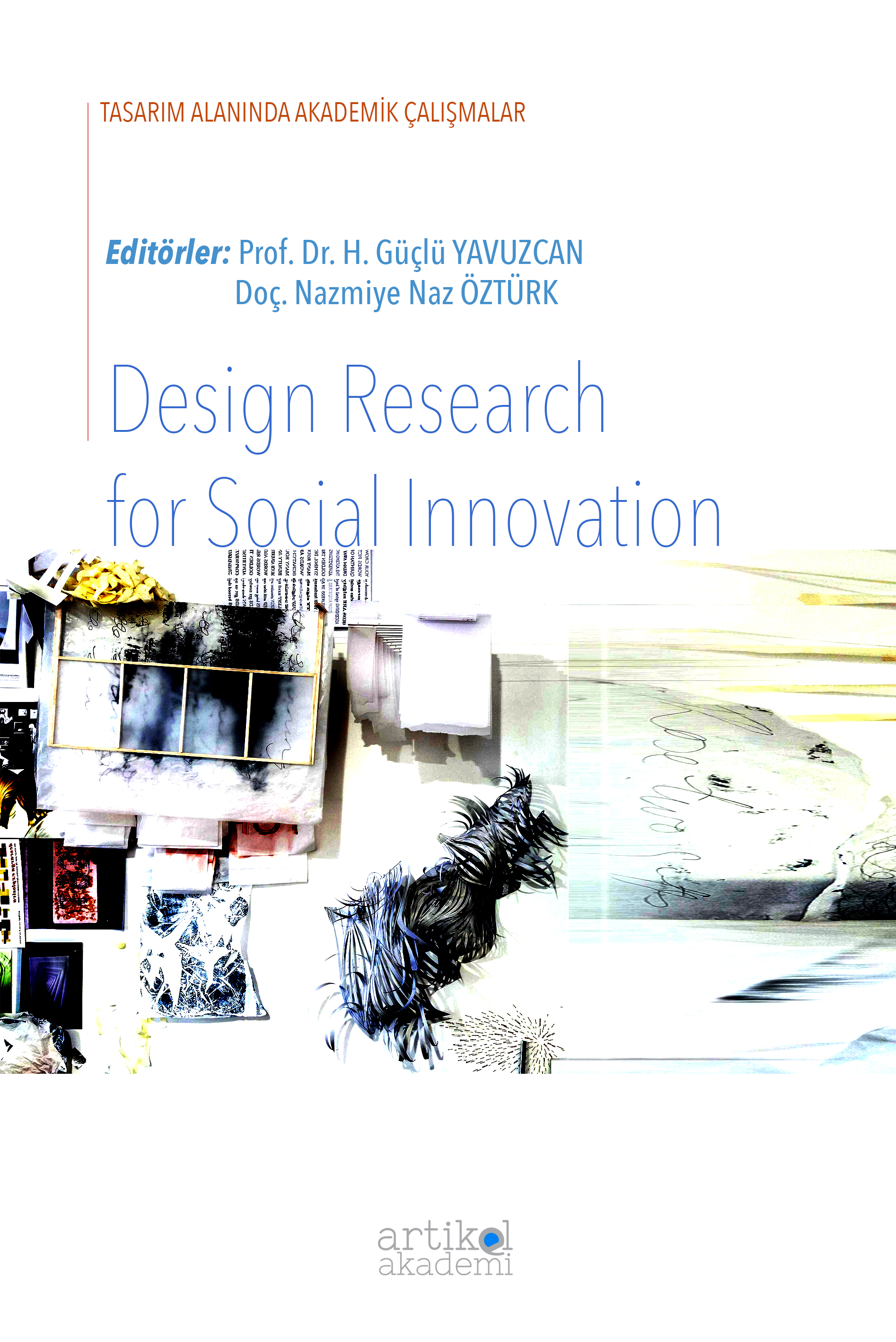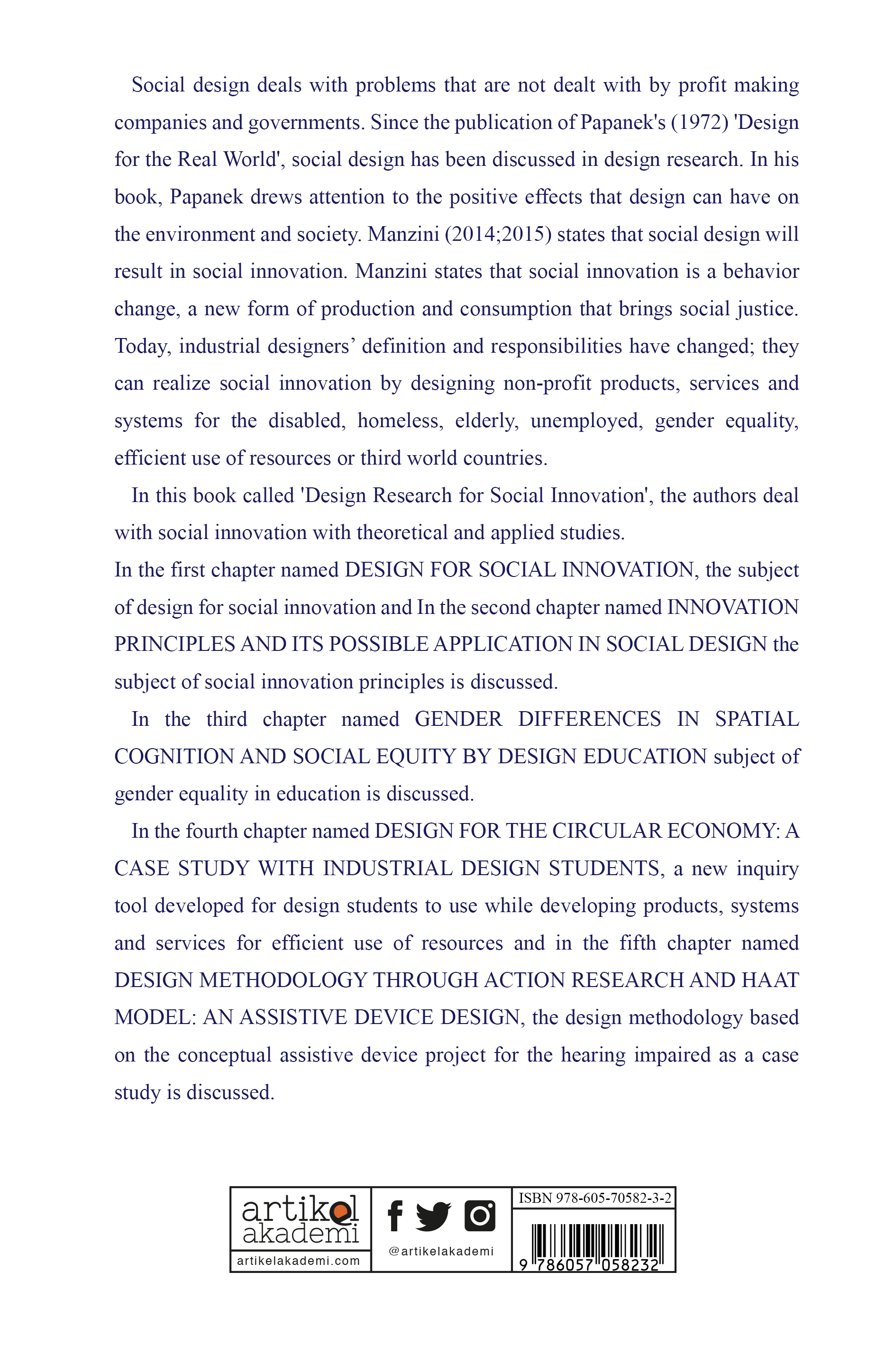

Social design deals with problems that are not dealt with by profit making companies and governments. Since the publication of Papanek's (1972) 'Design for the Real World', social design has been discussed in design research. In his book, Papanek drews attention to the positive effects that design can have on the environment and society. Manzini (2014;2015) states that social design will result in social innovation. Manzini states that social innovation is a behavior change, a new form of production and consumption that brings social justice. Today, industrial designers’ definition and responsibilities have changed; they can realize social innovation by designing non-profit products, services and systems for the disabled, homeless, elderly, unemployed, gender equality, efficient use of resources or third world countries. In this book called 'Design Research for Social Innovation', the authors deal with social innovation with theoretical and applied studies. In the first chapter named DESIGN FOR SOCIAL INNOVATION, the subject of design for social innovation and In the second chapter named INNOVATION PRINCIPLES AND ITS POSSIBLE APPLICATION IN SOCIAL DESIGN the subject of social innovation principles is discussed. In the third chapter named GENDER DIFFERENCES IN SPATIAL COGNITION AND SOCIAL EQUITY BY DESIGN EDUCATION subject of gender equality in education is discussed. In the fourth chapter named DESIGN FOR THE CIRCULAR ECONOMY: A CASE STUDY WITH INDUSTRIAL DESIGN STUDENTS, a new inquiry tool developed for design students to use while developing products, systems and services for efficient use of resources and in the fifth chapter named DESIGN METHODOLOGY THROUGH ACTION RESEARCH AND HAAT MODEL: AN ASSISTIVE DEVICE DESIGN, the design methodology based on the conceptual assistive device project for the hearing impaired as a case study is discussed.